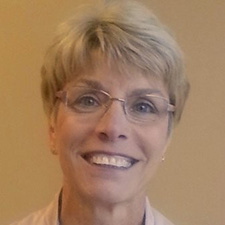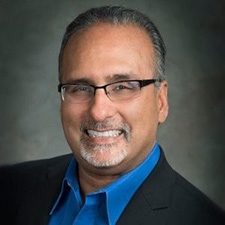Do You Speak ATMP-CGT-RMAT? Better Watch Your Language

By Louis Garguilo, Chief Editor, Outsourced Pharma

Editors and scientists should care about the words they use.
That’s why as an editor in the U.S., it’s curious to hear our industry’s scientists pitching the acronym ATMP, for Advanced Therapy Medicinal Product.
The FDA does not.
The agency’s similar (but not equivalent) term is Cellular and Gene Therapy – CGT.
Or not.
Barbara Unger, President, Unger Consulting, Inc., tells me I’m already using the wrong words.
“The FDA,” she says, “has done themselves no favors by naming what would be the equivalent of ATMPs in Europe, as Regenerative Medicine Advanced Therapy.”
That’s RMATs – pronounced “R mats.”

ATMP, it turns out, is a purely European construct, found in the Eudralex – European Union legislation enacted in 2015.
Is this simply some acrimonious acronym argument between regulatory regions?
“I think the two categories [ATMP and RMAT] are a part of both agencies wanting to appear supportive of new types of therapies and treatments,” suggests Unger.
“These terms are a general way to speak about new technologies, and the regulations to which they must comply.”
Yet that generality raises questions for protectors of precise phrasing:
- Can a “label” actually affect your development program?
- Will it influence how or who you select as your outsourcing partners?
- Can it invite/dissuade investor interest?

“The EMA tends to classify groups of drug-therapy modalities, while the FDA prefers to create specific guidances for each modality,” he explains.
“The only tangible impact being we have more guidances to apply to each type of drug modality in the U.S.”
I ask Erich Bozenhardt, Lead Process Engineer Regenerative Medicine, United Therapeutics Corporation, if I’m making a mountain out of a mole hill.
“Well, I think the specifics of the terms you use should first come down to how you interface with the regulators,” he replies.

“I do so because we tend to get very casual when we talk in the U.S.”
It’s easy, he says, to elicit the reaction of, “Oh, it's a cell therapy,” or “It’s a CAR-T,” because people can envision delivering cells.
“In the FDA's mind, though, we may actually have a gene-modified cell therapy, falling under the agency’s gene-editing mindset, different from its regular cell therapy, which is not modified.
“What’s that mean? There’s a difference in what they are looking for, regarding safety and efficacy. And that’s important.”
Start With Regulations
Unger has gone through both the EU and U.S. regulations and guidances.
“The requirements in the US and Europe are similar,” she tells me.
Specifically:
“The FDA regulations for cell and gene therapy are in [CFR - Code of Federal Regulations Title 21] Parts 1271, along with the GMP regulations in Parts 210/211, and some the 600s.”
“Similarly for the European ATMP requirements for cell and gene therapies, there are other GMP requirements that apply.
“You have to go back to ensure you are also conforming to all of the appropriate chapters and annexes in Eudralex 4, Good Manufacturing Practice Guidelines , particularly Annex 1, because most of these technologies include aseptic processing.
“So it's a mix and match of regulations in both jurisdictions”
And that’s important because:
“When you look at what gene and cell therapy manufacturers are actually getting cited for by regulators during inspections, a lot is related to failures to meet the fundamentals of GMP.
In other words, the inspection observations are not unique for the most part, and “do not represent novel interpretations of requirements.”
But while those regulations in the EU and U.S. are similar, there are important distinctions.
“Your readers,” Unger says, “need to remember when talking about either ATMPS or RMATs, there’s the significant safety issue of donor controls when human cells and tissues are involved.”
One difference is that for the Europeans, there’s the need for infectious-agent data testing six months after the donation, to ensure the donor did not have an early-stage infection process at a low level and not originally detected.
“This is not a requirement for the FDA,” says Unger.
Speak CDMO?
Both your U.S.- and Europe-based CDMOs must be fully conversant with these different bodies of regulations.
Does it matter, though, for an emerging biopharma, putting together an RFP, or starting to communicate with a CDMO, to talk in terms of an ATMP program, or CGT therapy, or RMAT project?
Unger chooses to answer this way:
“First of all, I'm not going to go to a ‘normal’ CDMO. Not unless they, too, have specific experience with cell and gene therapy or my given product type.
“This is a whole different technology. Your CDMO must have experience in your product type to be a truly valuable partner in the product-development effort. Perhaps then it matters minimally what you call your program.
Many of the bigger pharma companies are building out those capabilities, or acquiring smaller, specialized cell and gene players. And the same can be said of several large CDMOs with recent acquisitions in this area.
Bozenhardt is more circumspect:
“When we start talking about using developers and outsourcing in a different country than the one we're targeting from a regulatory perspective, we need to be careful about using the right terms.
“Picking the right terms can put you in the right slots and creates the right CMC expectations.
“Care is better exercised when interchanging acronyms. We can wind up thinking about pathways quite differently.
“And problems tend to grow when you have people speaking different languages, including different acronyms to start with.”
Enough For More
We’ll need to continue this discussion next time, because this is what we’ve learned so far:
Our industry should more fully reflect on this acronym acrimony.
It matters to your investors, regulators on different shores, how you select partners and outsource, and perhaps even how you develop and subsequently market your product – and yourself.
